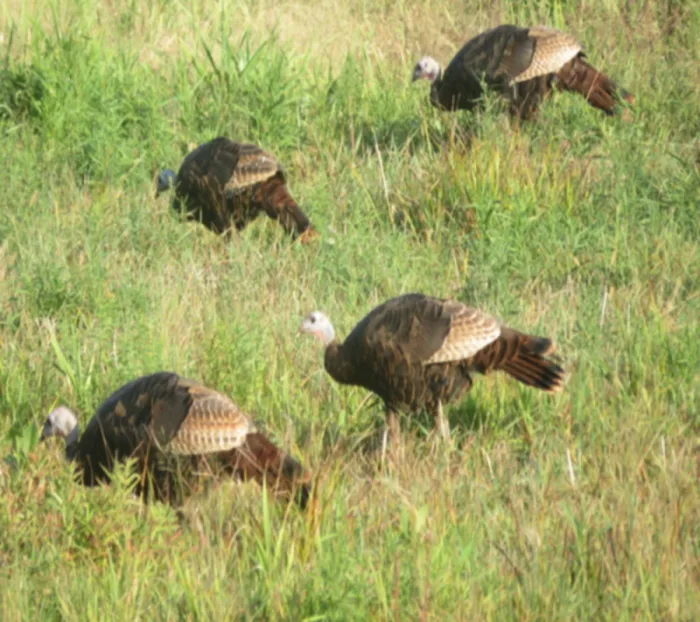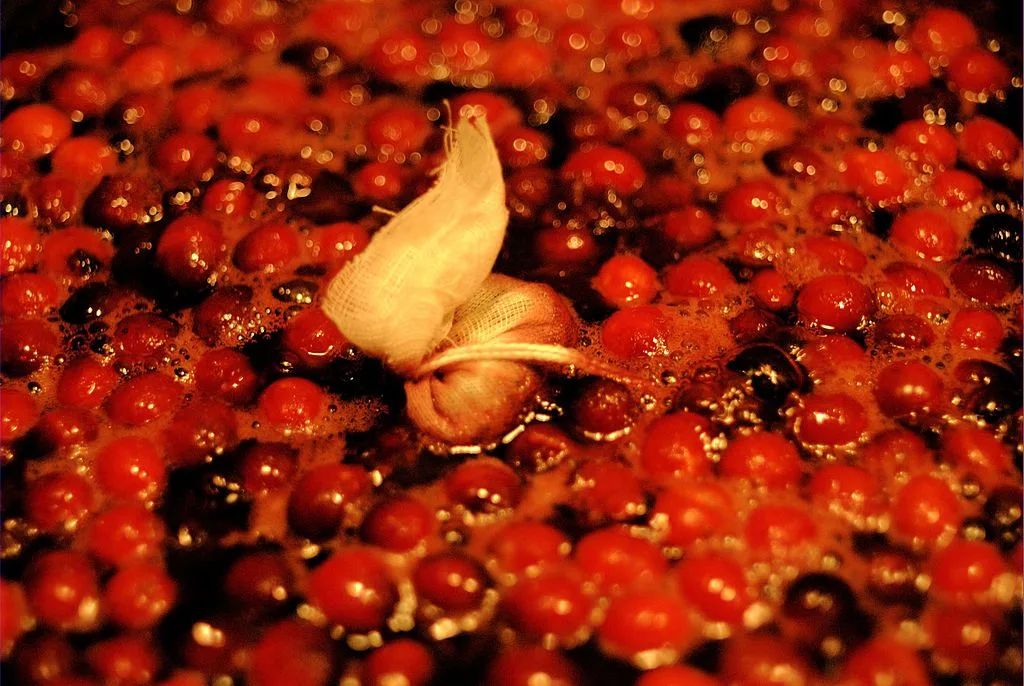
Talking turkey: Five facts about Canadian Thanksgiving
Everything you need to know about arguably Canada's tastiest national holiday.
As you read this, we hope you'll be sitting down to a Thanksgiving dinner, or are planning to soon.
It's got a good claim to being our tastiest national holiday (the cranberry sauce helps), but although now widespread, the origins of our holiday have a few weird twists and turns, from who did it first, to why turkeys are even CALLED turkeys!!
Here are five things to know.
WE BEAT THE PILGRIMS TO IT (BUT MAYBE NOT THE SPANISH)
Americans look back with pride on the Pilgrims at Plymouth Rock as the originators of their own Thanksgiving celebrations, in 1621.
But while we’re sure the Pilgrims were supremely grateful at having made it through the winter, and for the harvest, Canada’s own first Thanksgiving was celebrated much earlier on a totally different Rock ... maybe.
For that, we have Martin Frobisher to thank. He was already an accomplished seaman (and privateer, a legal pirate for the English crown) before setting out on three voyages to find the Northwest Passage.

Image: Dulwich Picture Gallery/Wikimedia Commons
That’s not an easy trip (Many others perished seeking the same thing, including the Franklin Expedition), and Frobisher tried it three times, courting disaster each time.
Flush with what he thought was gold (later found to be iron pyrite, “fool’s gold”), the fleet on his third voyage made landfall for a ceremony of thanksgiving in 1578 (the thanks, in this case, presumably being given for not having died on the way there).
Traditionally, this is considered to be in Newfoundland, but some sources say it may actually have been on the shores of what is now Frobisher Bay in Baffin Island (which we figure adds about +100 points to Canadian-ness).
(And anyway, it looks like a Spanish expedition at St. Augustine in Florida beat everyone to it in 1565, according to Penn State, but we’ll pretend we don’t know anything about that).
IT TOOK AWHILE TO FIGURE OUT WHEN EXACTLY THANKSGIVING WAS
From Frobisher’s celebration on the Rock (or maybe Baffin Island), it took quite some time for everyone to make up their minds on when to hold the official day, and it differed from region to region.
Although always incorporating its aspect as a harvest festival, most Thanksgiving days echoed back to Frobisher’s take as a time to give thanks for a specific event.
In 1763, for example, the Canadian Encyclopedia says people in Halifax dedicated the day to the end of the Seven Years’ War, when Britain drove France out of most of its North American territories for good, ending an ongoing security threat for the Nova Scotian capital.
And according to Canadian Living, the month didn’t even seem to matter. In 1816, a thanksgiving feast was held in Upper Canada (present-day Ontario) in June to celebrate the end of the Napoleonic Wars with France. In February 1833, Lower Canada, now Quebec, hosted a Thanksgiving for the end of a cholera outbreak. In 1856, both Canadas celebrated the end of the Crimean War in June.
Canada sort of started to get a handle on the Thanksgiving situation in 1879, when November 6 of that year was proclaimed a national holiday. But even then, confusion reigned, with the day falling anywhere in October or November until 1921.
That year, it was combined with Remembrance Day, and the two celebrations remained paired until 1930, when Thanksgiving was moved to a Monday in October. It wasn’t until 1957 that the holiday was formally declared for the second Monday in October.
All that fuss just for a turkey dinner. Speaking of which...
THE TRUTH ABOUT TURKEYS
Appropriately for the Americas – which were mistaken for a totally different continent by the Europeans who encountered them – turkeys are an unintended symbol of major confusion.
If you’re wondering why they’re named after a country that is nowhere near their actual home, there's a rather wonky backstory. As NPR tells it, when the birds were first imported to England, it was via merchants operating out of Constantinople, capital of the Ottoman Empire of the Turks. Average folks buying it for a meal would have associated it more with the Turks rather than the little-known New World, and it stuck.
WATCH BELOW: NOT YOUR USUAL TRAFFIC JAM; CURIOUS WILD TURKEYS HALT VEHICLES IN THE SNOW
The other explanation: Explorers may have mistaken it for a version of a Guinea fowl from West Africa ... often called Turkey coqs due to the Turkish merchants who traded it.
It’s an odd naming fate for a bird so deeply rooted in the Americas. Your Thanksgiving meal has an evolutionary history of 11 million years (according to WildTurkeyZone.com).
It was domesticated in Mexico as early as 800 BC and in the southwestern U.S. by 200 BC, according to Discovery.
Aside from food, the Maya, Aztecs and other peoples prized them for their plumage and as part of religious rites, as did some of the peoples in North America. Some pre-contact U.S. peoples actually encouraged their numbers as a side-effect of the controlled forest burning used to make meadowlands for game (according to Nature Almanac).
CRANBERRIES WERE PART OF A LEGIT SUPERFOOD
We’ve already talked about how the indigenous peoples of the Americas had a special place for turkey. But another Thanksgiving staple, cranberries, was also a super important cultural item, and may have paved the way for the exploration of Canada.
National Geographic says the cranberries were used for medicinal purposes by many Indigenous peoples (KitchenProject.com adds the juice was used as a dye), and its leaves were even used as a substitute for tobacco by the Inuktitut-speaking peoples of Canada.

Salim Fadhley/Wikimedia Commons. (CC BY-SA 2.0)
But its real value was as an ingredient in pemmican, where the berries would be mixed in with animal meat and fat, then dried. The result would keep for months at a time, a real boon for anyone travelling long distances.
European explorers recognized pemmican’s value also. Fur traders relied on the stuff for supplies during their deep forays into the North American continent to treat with the Indigenous peoples within.
We’re not sure if cranberries were an ingredient in the pemmican produced by the Metis people of the Canadian Prairie (they may have used a substitute), but it was important to them not just as a meal, but as a commodity to trade with Europeans from the east.
It was so important that when the governor of the Red River Colony in what is now Manitoba tried to restrict the pemmican trade, it fuelled an armed rebellion.
Incidentally, the pilgrims at Plymouth Rock likely didn’t have cranberry sauce at their first Thanksgiving. Mental Floss points out that, while they likely had the berries, the sauce as we know it today wouldn’t have been possible to make without sugar, which was in short supply in the early colonies.
CANADIANS JUST LOVE TURKEY
So except for those of us who prefer ham at Thanksgiving, it’s safe to say turkey is the one enduring symbol of the season. We love the bird, especially with all the fixin’s.
But just HOW much are we enamoured with the gobblers? Luckily, we have stats from Turkey Farmers of Canada to give us the precise picture of the kind of market there is.
First off, Canada’s 522 turkey farmers produced a ridiculous 364 million pounds of turkey in 2019, worth around $382 million. In terms of birds, Canadians bought 2.5 million whole turkeys for their Thanksgiving supper tables, 39 per cent of total 2018 sales.
The biggest surprise is this: Although the bird is associated with Thanksgiving to the extent that many people just call it “Turkey Day”, that’s not when we eat it the most.
At Christmas last year, we celebrated the season with the succulent help of 2.7 million turkeys, slightly edging out Thanksgiving with 42 per cent of the yearly total.
WATCH BELOW: THIS IS WHY YOU SHOULD NEVER DEEP FRY A FROZEN TURKEY
SOURCES: Biography.com | The Canadian Encyclopedia | Penn State | Canadian Living | Timeanddate.com | NPR | Wild Turkey Zone | Discovery | National Geographic | Nature Almanac | National Geographic | KitchenProject.com | Mental Floss | Turkey Farmers of Canada











